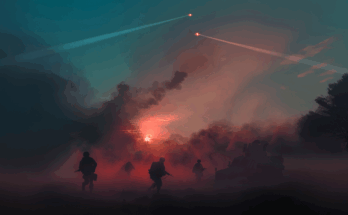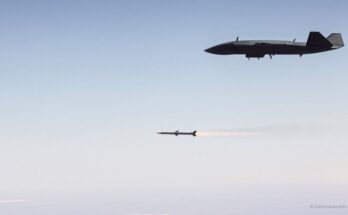
After an especially protracted competition and development, and eventually, a prime contract cancellation, the U.S. Air Force’s TPS-81 3DELRR radar program is likely to move forward with a new lead contractor.
In January, Air Force spokesman Patty Walsh was quoted in industry news as stating, “The Air Force is changing its acquisition strategy for the Three-Dimensional Expeditionary Long-Range Radar program and will take actions to conclude its current engineering and manufacturing development contract with Raytheon.” This revelation was soon followed by an announcement that the Air Force would re-select the contract prime under an expedited effort dubbed SpeedDealer, which would likely fill the radar requirement with a commercial off- the-shelf model.
Raytheon was originally selected as the TPS-81 3DELRR prime contractor in 2014. The TPS-81 3DELRR was the Air Force’s program to replace its long-serving TPS-75 radars. However, due to award protests from competitors Lockheed Martin and Northrop Grumman, the Air Force opted to relaunch the bidding process, a decision that was then promptly protested by Raytheon. In the end, this series of actions resulted in the TPS-81 3DELRR contract being delayed to 2017, with Raytheon being re-selected as program lead.
Development did not go smoothly, though. The program’s Critical Design Review was initially scheduled for October 2017, but was then pushed to January 2018 as a result of what the GAO Weapon Systems Annual Assessment (released April 2018) called “…a lack of technical readiness.” Despite ongoing difficulties, the Air Force set an acquisition baseline for TPS-81 in April 2018, with Initial Operational Capability set for 2023 and Full Operational Capability for 2029.
However, developmental difficulties continued, with Air Force FY21 budget documents, released in February 2020, citing “chronic challenges” with Raytheon’s TPS-81 3DELRR radar design. Raytheon’s development time was over – the FY21 budget included no 3DELRR program funding beyond FY21, with all funding from FY22 onward zeroed out.
Lt. Col. Matthew Judge, materiel leader of the 3DELRR, told aerospace and defense industry media that approximately 30 companies attended the SpeedDealer industry day on February 4, 2020. He noted that, due to SpeedDealer utilizing a COTS option, the Air Force expected initial production units of the 3DELRR replacement to be fielded in FY22, with FOC expected by the end of FY27.
Where are we now, though? SpeedDealer bids were due on April 1, 2020, and Forecast International has learned that, as expected, Lockheed Martin and Northrop Grumman submitted proposals. The status of Raytheon, the 3DELRR’s original program lead, is unknown. While the company, embattled throughout the 3DELRR’s complicated life, will have a tough time convincing Air Force procurement authorities to yet again award it a contract, the program’s $747.3 million procurement value (as estimated by the GAO in FY18 dollars) is simply too great to walk away from.
SpeedDealer’s outcome will soon become apparent. The Air Force, one imagines, is hoping that this TPS-75 replacement effort has an easier path to fielding than the aborted TPS-81 3DELRR.
In his role as a Senior Defense Electronics Analyst at Forecast International, C. Zachary Hofer's studies focus primarily on air, land, and sea radar systems, as well as the airborne electronics segment.



